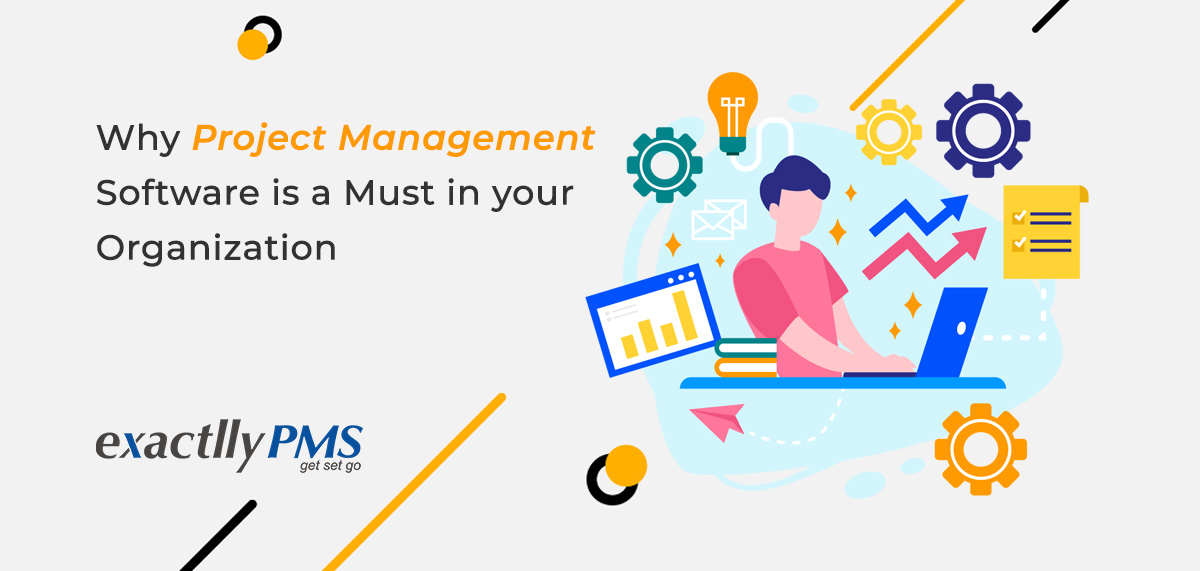8 Ways You Can Get the Most Out Of Your Project Management Software

A Project Management Software is one of the essential tools you will ever use in your company. It greatly simplifies the process of managing multiple projects that span across multiple teams, departments and locations. There is a glaring catch.
Most organizations complain that despite getting the “best” PMS, they are not getting the desired results. Sometimes the features are not what they wanted, other times the employees are hesitant to work on it. So what must be done?
Here are the 8 things you could do to get the most out of your Project management Software:
1. Find the Right PMS
There are dozens of Project Management Software in the market, each claiming to be the best for you. However, only you can be the best judge of their claim.
Define the set of goals you want to achieve, and then look for PMS that satisfies the goal. Budget is often a constraint, so try to filter the available choices. However, there are many other things you must keep in mind.
The software you choose must not be too complicated for your organization. If you have to keep running to your IT team for trivial issues, then such a system is of no use. Always make sure that the PMS you select reflects the requirements of your company.
2. Keep it mobile
Mobility is the rising trend in the industry, and you would not want to be left behind. It is prudent to go for a PMS that is mobile-optimized. This will ensure that your team can access the system from their smartphones and work even from remote locations, as and when required.
Furthermore, it would ensure that your team can always access the information needed for the project, wherever they are. In the long term, mobility is a must-have feature.
3. Ensure integration
The Project Management Software has to be installed over your existing framework, which means it will have to access a number of applications. Hence, you must ensure that the PMS can be successfully integrated with the other important applications of your organization.
Failure to do so will obviously pose major issues and hinder work. In particular, the data sharing must be secure yet easy to the PMS and other key applications.

4. Keep the expectations grounded
It is easy to fall into the lure that having a Project Management Software will solve all your problems. However, it would be childish to think so. The main aim of a PMS is to automate and simplify project management processes, but that doesn’t mean it would completely replace them.
Quite often, people go for complex PMS with the hopes that it would save them the costs of manual project management processes. However, they only end up getting disappointed.
The primary objective of PMS is to achieve partial automation and accelerate the operations. You should keep that in mind while setting your expectations.
5. Serve one by one
A Project Management Software is big software with dozens of functionalities. Giving all of it to the employees at once can have adverse effects. Employees could be overwhelmed and lose any interest in working on it. The better approach would be to follow incremental rollouts.
It means that you only provide the features to your employees, one at a time. Once they are proficient in it, you can move ahead with the next one. It is the same approach teachers follow at schools. Since we all are kids at heart, this explains why this strategy would work.
Doing a “big bang deployment” may seem fast and cost-effective, but it will not achieve the desired results in most cases. Incremental deployment, on the other hand, can be a effective strategy for complete adoption.

6. Keep a ‘Go-To’ guy
Like in case of any software, there is a reluctance in your employees while switching to a PMS. The reasons could be an unwillingness to change or a failure in understanding its importance and execution. In either case, it would be better to appoint a leader who could solve their issues.
The leader is responsible for clarifying the doubts of the team and making them aware of the features and functionalities. He is also responsible for enforcing the adoption of the PMS among the employees and making sure it is used in a right manner.
If you do not have a trained leader, you can go for external service providers to get the training and support.
7. Promote interactivity
The only way employees will successfully adapt to the new system is if they go all in. One important aspect is that they must not be using any other PMS to work on the project. In the short-term, it might get things done. However, if you think of the long-term, it would only hinder the performance of the employees. Keep a track to ensure everyone is on the same page.
Also, make sure that employees do not have any inhibitions about asking for help. Most senior employees suffer from this issue since they feel embarrassed to ask for help (often) from their junior colleagues.
Having the aforementioned PMS leader can solve this problem to an extent. Try to create an environment in your office where people who seek help are appreciated.

8. Deploy PMS where it matters
Even though the primary objective of using a Project Management Software is to automate and simplify project management processes, there are other fields where you can use it too.
For instance, you could use it to record metrics like status and margins. The information about real-time processes will enable you to keep a track on the progress of the project at all times. It would also allow you to create detailed reports which could be later used for gaining insights.
Conclusion
A Project Management Software is a crucial part of any business, which is designed to make things easier for you. It is a powerful tool that could augment your management processes and result in monetary gains.
A few simple steps are enough to make the optimal utilization of this software. It might look unnecessary and cumbersome in the beginning, but will pay off in the long run.



